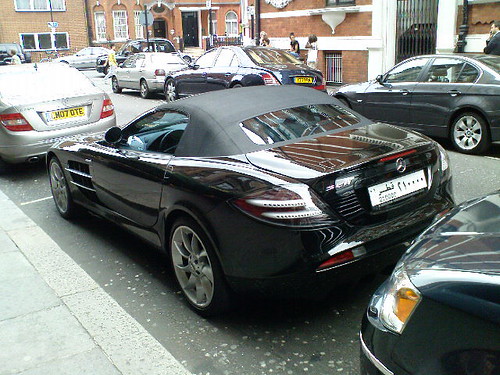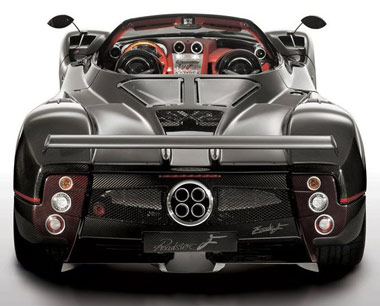 Inauguration of the biggest car producing site in the middle east - Iran - Kashan
Inauguration of the biggest car producing site in the middle east - Iran - Kashan




 Inauguration of the biggest car producing site in the middle east - Iran - Kashan
Inauguration of the biggest car producing site in the middle east - Iran - Kashan




 A Black box for cars - containing basic information about its motion, function and features - similar to those found in airplanes, has been invented by two Bahraini students.
A Black box for cars - containing basic information about its motion, function and features - similar to those found in airplanes, has been invented by two Bahraini students. A newly launched automotive investment firm in Qatar has announced plans to set up an automotive cluster in the Gulf state by 2020, the Peninsula has reported.
A newly launched automotive investment firm in Qatar has announced plans to set up an automotive cluster in the Gulf state by 2020, the Peninsula has reported.  Iran Khodro Company (IKCO) has taken a step closer to total self-sufficiency in its vehicle production after acquiring the technology to produce its own powertrains. The company has acquired cylinder block and cylinder head machining equipment, which will enable it to produce powertrains for 680,000 vehicles by the end of the current Iranian calendar year (March 21 2010). In the next full year, IKCO aims to supply 800,000 powertrains.
Iran Khodro Company (IKCO) has taken a step closer to total self-sufficiency in its vehicle production after acquiring the technology to produce its own powertrains. The company has acquired cylinder block and cylinder head machining equipment, which will enable it to produce powertrains for 680,000 vehicles by the end of the current Iranian calendar year (March 21 2010). In the next full year, IKCO aims to supply 800,000 powertrains.  For the first time a 150-horsepower, double cabin pick-up, produced in the UAE, has been launched in the market by Gulf Automobile Industry Corp priced between Dh36, 000 and Dh60, 000, reported Gulf News. The automobile has about 40 per cent local component, sourced from GCC and Arab countries and is being manufactured in a factory in Abu Dhabi.
For the first time a 150-horsepower, double cabin pick-up, produced in the UAE, has been launched in the market by Gulf Automobile Industry Corp priced between Dh36, 000 and Dh60, 000, reported Gulf News. The automobile has about 40 per cent local component, sourced from GCC and Arab countries and is being manufactured in a factory in Abu Dhabi.














Following the launch of the new Octavia late last year, the vRS and Scout have now also been updated to bring them into line with the current range and family face of Škoda.
The facelifted vRS has a redesigned front grille featuring the vRS logo and bold headlamps, which for the first time can be fitted with xenon headlights combined with the adaptive front lighting system.
The car has two more completely new features: front fog lamps with optional cornering function and LED lamps for daytime lighting. The rear lights have also been redesigned to look more attractive and new 18-inch Neptune alloy wheels are available.

Other changes to the vRS include a new metallic paint, Anthracite, and a lowered (now 127mm) sports-tuned chassis. The car is also lighter – the petrol version by 20kg and the diesel by 15kg. With reduced air resistance the maximum speed of the vRS is now higher and the car’s responsiveness and acceleration have also been improved.
The vRS is available with a choice of two powerplants, a 2.0-litre TFSI 150kW (petrol) or a 2.0-litre TDI 126kW (diesel) engine both of which are available with a six-speed manual twin-clutch DSG transmission.
The new Scout has a redesigned front grille, bold headlamps and body-coloured side mouldings. The front fog lights can be fitted with the optional cornering function and the large front bumper emphasises the car’s rugged appearance. A new metallic paint, Rosso Brunello, is also available across the Octavia range.

With 179mm ground clearance and efficient chassis protection, the Octavia Scout can also handle itself off-road. The all-wheel drive system features the fourth-generation Haldex clutch, which can transfer as much as 86 per cent of the torque to a single wheel.
The Scout is available with two engine choice, a 1.8-litre TSI 119kW (petrol) and 2.0-litre TDI 104kW (diesel) combined with a six-speed mechanical transmission.

Following the launch of the new Octavia late last year, the vRS and Scout have now also been updated to bring them into line with the current range and family face of Škoda.
The facelifted vRS has a redesigned front grille featuring the vRS logo and bold headlamps, which for the first time can be fitted with xenon headlights combined with the adaptive front lighting system.
The car has two more completely new features: front fog lamps with optional cornering function and LED lamps for daytime lighting. The rear lights have also been redesigned to look more attractive and new 18-inch Neptune alloy wheels are available.

Other changes to the vRS include a new metallic paint, Anthracite, and a lowered (now 127mm) sports-tuned chassis. The car is also lighter – the petrol version by 20kg and the diesel by 15kg. With reduced air resistance the maximum speed of the vRS is now higher and the car’s responsiveness and acceleration have also been improved.
The vRS is available with a choice of two powerplants, a 2.0-litre TFSI 150kW (petrol) or a 2.0-litre TDI 126kW (diesel) engine both of which are available with a six-speed manual twin-clutch DSG transmission.
The new Scout has a redesigned front grille, bold headlamps and body-coloured side mouldings. The front fog lights can be fitted with the optional cornering function and the large front bumper emphasises the car’s rugged appearance. A new metallic paint, Rosso Brunello, is also available across the Octavia range.

With 179mm ground clearance and efficient chassis protection, the Octavia Scout can also handle itself off-road. The all-wheel drive system features the fourth-generation Haldex clutch, which can transfer as much as 86 per cent of the torque to a single wheel.
The Scout is available with two engine choice, a 1.8-litre TSI 119kW (petrol) and 2.0-litre TDI 104kW (diesel) combined with a six-speed mechanical transmission.



 Seats and interior features include a total capacity of seats for five people, front seats cube, upholstery fabric, and a height adjustable driver seat. To the rear, the Spectra 5 has a bench type seat and 40-60 split folding rear and a rear-seat divisible. Power Functions 2008 Kia Spectra 5 hatchback are remote power door locks, power windows, a window one-touch power, heated mirrors and electric mirrors.
Seats and interior features include a total capacity of seats for five people, front seats cube, upholstery fabric, and a height adjustable driver seat. To the rear, the Spectra 5 has a bench type seat and 40-60 split folding rear and a rear-seat divisible. Power Functions 2008 Kia Spectra 5 hatchback are remote power door locks, power windows, a window one-touch power, heated mirrors and electric mirrors.